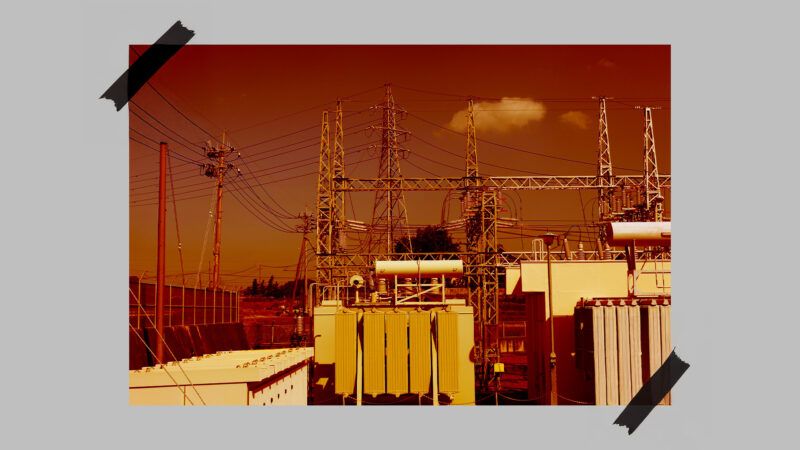Trump Promised Lower Electricity Bills. His Trade War Could Drive Them Higher.
The Trump administration recently expanded its list of tariffs to include grid transformers, parts of nuclear reactors, and parts for offshore oil drilling.

On the campaign trail, Donald Trump promised to cut "electricity prices by half" within 18 months of becoming president. In the eight months since he took office, Trump's plans haven't worked, and electricity prices have steadily increased, rising at nearly twice the rate of inflation over the past 12 months.
Predictably, the Trump administration has blamed renewables for this trend, with Energy Secretary Chris Wright recently saying that the "momentum" of the policies enacted by Barack Obama and Joe Biden is responsible for electricity price increases. Trump has announced that his administration will no longer approve wind and solar projects, and on Friday, the Interior Department issued a work stoppage at an offshore wind farm in Rhode Island that was 80 percent complete and expected to come online this year.
The government's preferential treatment of renewables is partially responsible for these price hikes; flood the grid with intermittent energy sources, while making it harder for fossil fuels to operate, and electricity prices will rise.
But this isn't the only reason why electricity costs have gone up. As Heatmap's Robinson Meyer explains, the cost of building out the electrical grid—i.e., poles and wires—is the primary driver. In 2023, utilities spent "roughly $6 billion" more on "overhead poles, towers, and conductors" than they did in 2019, reports Meyer.
With some forecasts showing electricity demand growing by 25 percent through 2030 as more data centers are brought online, utilities will need to spend even more to improve and expand the power grid. And some already are. The Edison Electric Institute estimates that investor-owned electric companies will invest close to $38 billion in grid transmission this year, an $8 billion increase from 2023.
Trump's tariff regime could make these grid investments more expensive.
Last week, the Trump administration expanded the list of goods that are subject to its 50 percent tariffs on steel and aluminum imports. Some of these items, like milk, "plainly are not steel or aluminum," writes Reason's Eric Boehm. Others are critical components of the electric grid, like large- and small-scale transformers, which enable the efficient distribution of electricity along power lines and whose supply needs to increase rapidly for the U.S. to meet its power demands. (The expanded list also includes "parts of nuclear reactors," "wind turbine blades," and parts for "offshore oil and natural gas drilling and production platforms.")
America makes some of its own transformers but mostly imports them from Mexico and China. Like many other products, transformers have been in short supply since the COVID-19 pandemic. In 2019, the average lead time for transformer orders was three to six months. In 2023, it jumped to 12 to 30 months, according to the Energy Department.
Before last week's expanded tariff announcement, experts were sounding the alarm on the effect that Trump's trade war could have on America's power grid. The new list has industry leaders worried again about what lies ahead. "The updated trade policies have clearly added complexity and cost," Ted Simpson, vice president of marketing at Hammond Power Solutions, the largest manufacturer of dry-type transformers in North America, told tED Magazine. "While we've developed a solid understanding of the new measures, we're still progressing along the learning curve." Simpson did add that he's "confident" in his company's ability "to adapt quickly."
Some projects are underway—and have been underway before Trump's election—to make more transformers domestically, which could increase supplies within 12 to 36 months, Doug Houseman, a senior energy consultant, told T&D World in May.
But even if these projects are successful and the transformers are built in the U.S., domestic manufacturers will still have to eat the higher costs of the steel, copper, and other inputs because of tariffs. These will likely be paid for by customers like utility companies, which have more than doubled their spending on transformers since 2019. For ratepayers, this will likely mean higher electricity bills and a less reliable power grid. For Trump, this means falling short on a key campaign promise.
